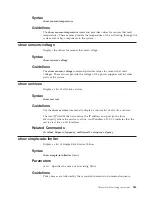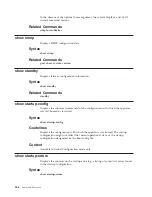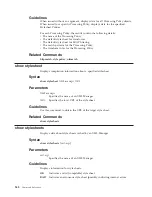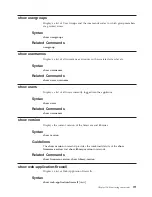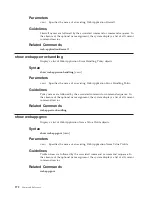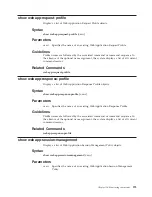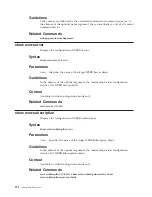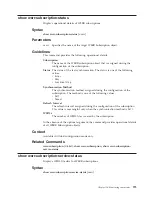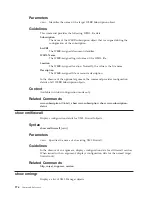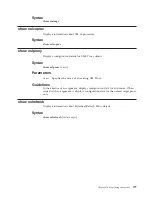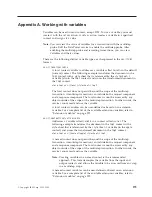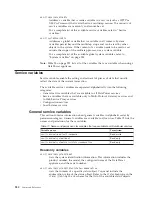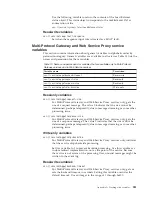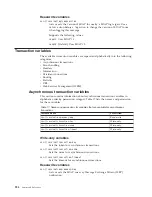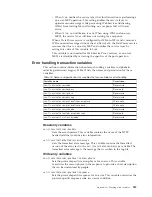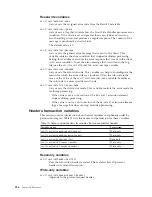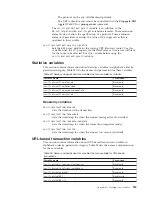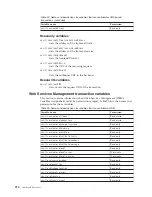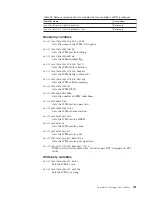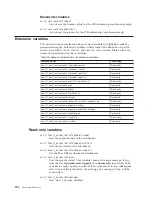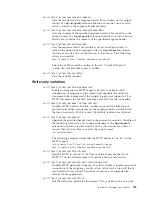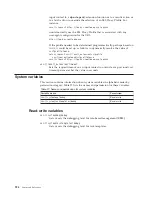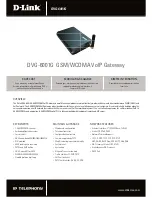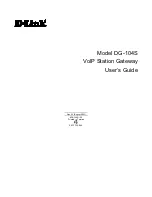
Appendix A. Working with variables
Variables can be used in most context, except
PIPE
. To use a variable, you must
create it with the
setvar
action. A
setvar
action creates a variable in a specified
context and assigns it a value.
Note:
You can view the value of variables for a transaction with the multistep
probe. Edit the DataPower service to enable the multistep probe. After
enabling the multistep probe and recording transactions, you can view
variables and their values.
There are the following distinct variable types, each expressed in the
var://
URL
format:
var://local/
variable
A local context variable to addresses a variable called
variable
in the default
(current) context. The following example transforms the document in the
tmp1
context with a style sheet that is referenced by the
stylesheet-1
variable (also in the
tmp1
context) and stores the transformed document in
the
tmp2
context:
xform tmp1 var://local/stylesheet-1 tmp2
The local context does not persist beyond the scope of the multistep
transaction. A multistep transaction can include both a request component
and a response component. The local context cannot be accessed by any
object outside of the scope of the multistep transaction. In other words, the
service cannot read and use the variable.
A local context variables can be user-defined or based on an extension
variable. For a complete list of the available extension variables, refer to
“Extension variables” on page 992.
var://context/
context
/
variable
Addresses a variable called
variable
in a context called
context
. The
following example transforms the document in the
tmp1
context with a
style sheet that is referenced by the
stylesheet-1
variable (in the
apple
context) and stores the transformed document in the
tmp2
context:
xform tmp1 var://context/apple/stylesheet-1 tmp2
A named context does not persist beyond the scope of the multistep
transaction. A multistep transaction can include both a request component
and a response component. The local context cannot be accessed by any
object outside of the scope of the multistep transaction. In other words, the
service cannot read and use the variable.
Note:
Creating variables in a named context is the recommended
approach. This form decouples the variable from the input and
output contexts and allows the variable to be accessed from any step
in a multistep scope.
A named context variables can be user-defined or based on an extension
variable. For a complete list of the available extension variables, refer to
“Extension variables” on page 992.
© Copyright IBM Corp. 1999, 2008
979
Summary of Contents for WebSphere XS40
Page 1: ...WebSphere DataPower XML Security Gateway XS40 Command Reference Version 3 7 2 ...
Page 2: ......
Page 3: ...WebSphere DataPower XML Security Gateway XS40 Command Reference Version 3 7 2 ...
Page 44: ...18 Command Reference ...
Page 194: ...168 Command Reference ...
Page 198: ...172 Command Reference ...
Page 206: ...180 Command Reference ...
Page 210: ...184 Command Reference ...
Page 222: ...196 Command Reference ...
Page 232: ...206 Command Reference ...
Page 238: ...212 Command Reference ...
Page 268: ...242 Command Reference ...
Page 272: ...246 Command Reference ...
Page 276: ...250 Command Reference ...
Page 288: ...262 Command Reference ...
Page 292: ...266 Command Reference ...
Page 298: ...272 Command Reference ...
Page 320: ...294 Command Reference ...
Page 322: ...296 Command Reference ...
Page 340: ...314 Command Reference ...
Page 344: ...318 Command Reference ...
Page 352: ...326 Command Reference ...
Page 360: ...334 Command Reference ...
Page 368: ...342 Command Reference ...
Page 376: ...350 Command Reference ...
Page 386: ...360 Command Reference ...
Page 392: ...366 Command Reference ...
Page 396: ...370 Command Reference ...
Page 402: ...376 Command Reference ...
Page 404: ...378 Command Reference ...
Page 408: ...382 Command Reference ...
Page 446: ...420 Command Reference ...
Page 450: ...424 Command Reference ...
Page 456: ...430 Command Reference ...
Page 520: ...494 Command Reference ...
Page 536: ...510 Command Reference ...
Page 550: ...524 Command Reference ...
Page 584: ...558 Command Reference ...
Page 600: ...574 Command Reference ...
Page 605: ... timeout 500 Chapter 63 RADIUS configuration mode 579 ...
Page 606: ...580 Command Reference ...
Page 650: ...624 Command Reference ...
Page 668: ...642 Command Reference ...
Page 704: ...678 Command Reference ...
Page 714: ...688 Command Reference ...
Page 726: ...700 Command Reference ...
Page 734: ...708 Command Reference ...
Page 752: ...726 Command Reference ...
Page 756: ...730 Command Reference ...
Page 804: ...778 Command Reference ...
Page 880: ...854 Command Reference ...
Page 892: ...866 Command Reference ...
Page 912: ...886 Command Reference ...
Page 918: ...892 Command Reference ...
Page 940: ...914 Command Reference ...
Page 946: ...920 Command Reference ...
Page 974: ...948 Command Reference ...
Page 1004: ...978 Command Reference ...
Page 1030: ...1004 Command Reference ...
Page 1032: ...1006 Command Reference ...
Page 1065: ......
Page 1066: ... Printed in USA ...

